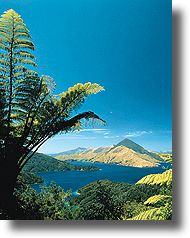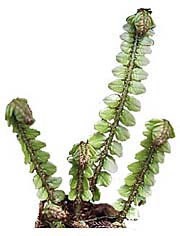|
The importance of Conservation in NZ |
|
The importance of Conservation in NZ |
New Zealand's plants and animals have developed during 80 million years of isolation. These islands, fragments from the supercontinent of Gondwana, have seen the evolution of species so distinctive that scientists have described New Zealand as the closest one can get to studying life on another planet.
Many of New Zealand's indigenous (that means they are native to NZ) species are endemic (found only in New Zealand). This is remarkable internationally. Britain, which has been separated from continental Europe for just 10,000 years, has only two endemic species: one plant and one animal. Yet around 90 percent of New Zealand's insects and marine molluscs, 80 percent of trees, ferns and flowering plants and 25 per cent of bird species, all 60 reptiles, four remaining frogs and two species of bat are found nowhere else on Earth.

Unique wildlife
We boast the world's only flightless parrot (the kakapo), and a bird with nostrils at the end of its beak (the kiwi), also flightless. Safe from predatory mammals, birds ran free on the ground and several species lost the use of their wings. A host of other plants and animals have retained their ancient forms. Wingless crickets, known as weta, grew to take the place of mice in the food chain as they foraged on the forest floor, and a primitive frog bears live young.
Many of the ecosystems where these creatures live - the tall kauri forests of the North, the dunelands with their spinifex and pingao and the braided river systems of the South - are all unique to New Zealand too. The uniqueness of much of New Zealand's biodiversity (diversity or differences of species and ecosystems) means the responsibility for its continued existence is entirely up to New Zealanders; it cannot be conserved in nature anywhere else in the world.

Enormous impact
This country was one of the last places on earth to be settled by humans. When they eventually arrived around 1000 years ago, the impact on indigenous species was huge. Many became extinct and around 1000 more continue to be threatened by the destruction of habitats, animal pests and invasive weeds. The first casualties were New Zealand's larger bird species, including all 11 species of the giant flightless moa.
By around 1600 up to a third of their forest habitat had been burned and replaced by grasslands. Hunting and loss of habitat took care of another 23 land-based native bird species, including the giant Haast's eagle. The arrival of Europeans and their animals in increasing numbers from the middle of last century saw another third of New Zealand's forests converted to farmland and the extensive drainage of wetland habitats.

While ongoing habitat loss is a serious problem, the biggest threat now is introduced weeds and animal pests. The most damaging animal pests include possums (around 70 million), stoats, feral cats, rats, deer and goats. The Department of Conservation wages an ongoing battle to keep pest numbers under control.
Showing decline
An increase in active conservation management and changes in attitude to the natural environment over the past twenty years appear to be slowing the rate of decline. Widespread clearance of native vegetation on private land and the reclamation of estuaries has been stopped.
Breakthroughs in threatened species management, including better pest control, extending protected areas on land and sea and restoring offshore island sanctuaries have had an impressive effect. The decline of some species has been halted.
1. Make a glossary for this page,
containing words that have been bolded, and some others as
well. You should have at least 15 words in your glossary,
clearly explained. Make sure they are in alphabetical
order! 2. Show in a chart the difference between
the UK and New Zealand, insofar as biodiversity is
concerned. Make sure it shows not only what the differences
are, but why they are so. 3. Show the impact of humans on the New
Zealand environment over time, using a flow chart or
timeline. .
![]() FOLLOWUP
FOLLOWUP